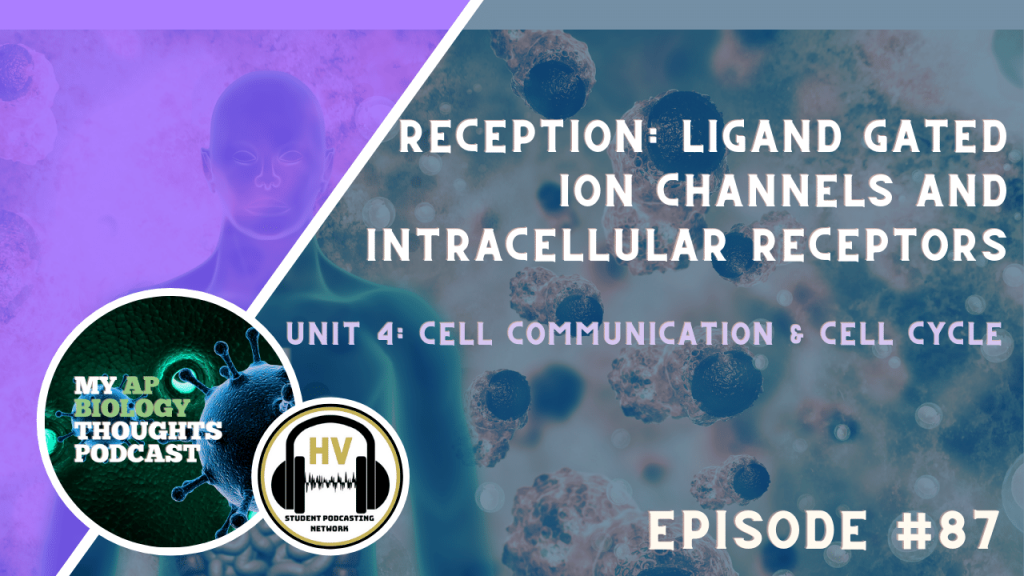Reception: Ligand Gated Ion Channels and Intracellular Receptors

My AP Biology Thoughts
Unit 4 Cell Communication and Cell Cycle
Welcome to My AP Biology Thoughts podcast, my name is Pauline Brillouet and I am your host for episode #87 called Unit 4 Cell Communication and Cell Cycle: Reception: Ligand Gated Ion Channels and Intracellular Receptors. Today we will be discussing the function and examples of these two types of receptors.
Segment 1: Introduction to Reception: Ligand Gated Ion Channels and Intracellular Receptors
- Ligand gated ion channels and intracellular receptors are both involved in the first step of a signaling pathway known as reception. Reception is the process where a signal, or otherwise called a ligand, binds to a receptor. The ligand-binding domain of the receptor recognizes the specific chemical messenger to then start transduction. One thing to note is that the binding of ligand and receptor is noncovalent, so it is temporary and functions like an enzyme-substrate complex where size and shape of the signal is essential.
- The main difference between the two receptors we are exploring is their location. Ligand-gated ion channels are membrane proteins. Meaning they are embedded in the membrane. Like the name suggests, intracellular receptors obviously lie within the cell.
Segment 2: More About Reception: Ligand Gated Ion Channels and Intracellular Receptors
- Ligand gated ion channels either open or close in response to binding. They conduct ion flow. An example is a neurotransmitter binding to neurons, which opens the gate for Na+
- Intracellular receptors require ligands that are small or nonpolar because they can diffuse through the membrane. An example of this is the sex hormone estrogen or any steroid hormone. When a hormone enters a cell and binds to its receptor, it causes the receptor to change shape, allowing the receptor-hormone complex to enter the nucleus (if it wasn’t there already) and regulate gene activity
Segment 3: Connection to the Course
- The hydrophilic ion channel lets ions cross the membrane without having to touch the hydrophobic core of the phospholipid bilayer. Changes in ion levels inside the cell can change the activity of other molecules, such as ion-binding enzymes. The binding of neurotransmitters to neurons is also essential for the entire nervous system and basic brain functions such as attention, learning, and memory.
- Intracellular receptors are unique because they cause these changes very directly, binding to the DNA and altering transcription themselves. A very important gas that acts as a ligand that is able to directly diffuse through the membrane is Nitric oxide (NO). It activates a signaling pathway in the smooth muscle surrounding blood vessels, one that makes the muscle relax and allows the blood vessels to expand. Drugs that treat heart diseases release NO to bind to the intracellular receptors and dilate vessels to restore blood flow to the heart.
Thank you for listening to this episode of My AP Biology Thoughts. For more student-ran podcasts and digital content, make sure that you visit www.hvspn.com. Thank you!
Music Credits:
- “Ice Flow” Kevin MacLeod (incompetech.com)
- Licensed under Creative Commons: By Attribution 4.0 License
- http://creativecommons.org/licenses/by/4.0/
Subscribe to our Podcast
Connect with us on Social Media
Twitter @thehvspn
Welcome to My AP Biology Thoughts podcast, this is episode #87 called Unit 4 Cell Communication and Cell Cycle: Reception: Ligand Gated Ion Channels and Intracellular Receptors.

